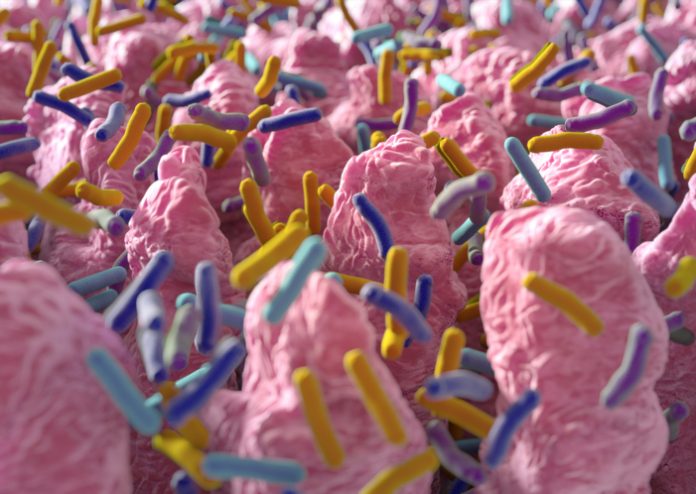
Researchers in the U.K. and Germany have completed a study of the gut microbiome in mice and determined that in addition to the influences of diet and the environment, genetics also plays an important role in the composition of the bacteria present in the microbiome. In addition to finding that many of the bacterial species present in the gut were heritable from one generation to the next, the investigators also discovered that the microbes and their mouse host evolve together.
“Our genetic mapping revealed more than 400 gene regions associated with changes in abundance in about 120 different bacterial taxa within the microbiome,” said Shauni Doms, Ph.D., from the Max Planck Institute for Evolutionary Biology, the first author of the study. “We were able to narrow down this large number to about 80 high-confidence candidate genes, many of which are known to be involved in recognition and communication with bacteria.”
As part of their work, the researchers examined links between genes known to cause disease—such as irritable bowel syndrome (IBS)—and the microbiome, and discovered that these genes were indeed clustered in the areas of the genome associated with gut microbe composition.
The researchers, from the Section for Evolutionary Medicine at Kiel University and the Max Planck Institute for Evolutionary Biology (MPI-EB) in Plön, Germany, led by Prof. John Baines, together with Leslie Turner, Ph.D., from the University of Bath, studied hybrids of house mice, since they are more genetically diverse than lab-bred models.
The research, published in eLife, profiled the abundance of gut bacteria found in hybrid mice strains, while examining the relationships between microbial diversity and the genetics of the mouse hosts. A surprise finding was that bacteria known to co-diversify across mammalian hosts were more likely to be inherited, which suggests that co-evolution with these particular taxa could be taking place.
“Previous mapping studies of the gut microbiome in mice were largely based on inbred lab strains which had limited genetic diversity and lacked some of their native microbes,” noted Turner, a lecturer at the Milner Centre for Evolution, University of Bath. “Hybrid mice derived from the wild on the other hand, are more genetically varied and retain similarity to their wild microbiome. Thus, our study had a greater chance to capture ongoing evolutionary processes in nature.”
While genetic mapping of the gut microbiome has been previously studied in mice, the new research marks the first study in wild hybrid mice.
“Studying lab mice vs wild mice is a bit like looking at dogs instead of wolves,” noted Turner. “Although some of the genes we discovered were previously highlighted as candidates contributing to gut disease in lab mice studies, we also identified several novel candidate genes that could be involved in gut-related conditions. Next, we want to look at these new candidate genes in more detail to find out their exact role in maintaining a relationship with microbes.”
Turner further noted that the work of the team is the first to establish a direct relationship between heritability and the degree of bacterial diversification with the hosts during speciation.
“We hope that a better understanding of the genetic architecture of host-microbe interactions in mice could help give us new perspectives on human gut-related conditions, and provide new insights into treatment and management of these disorders,” he concluded.













